
A Traveler Guide to the Best of Cuban Music & Popular Cuban Songs
If you are traveling to Cuba and want to learn about Cuban music and popular Cuban songs, then you have come to the right place!
Music is everywhere in Cuba, and it is hard not to experience Cuban music one way or the other. To help you get the most out of the experience of Cuban music and Cuban songs I have created this guide for travelers embarking on a Cuba adventure!
Cuban music has something for everyone, from traditional genres like son and rumba to more contemporary styles like salsa and reggaeton.
I’m no music expert (actually very far from that!). Still, during my travels to and stay in Havana for more than 5 months while I studied Spanish at the University of Havana, I couldn’t help but get drawn into the fascinating world of Cuban music.
So, this post is a brief introduction to Cuban music, the popular Cuban music genres, and some of my favorite Cuban songs.
Let’s explore Cuban music and Cuban songs together!
Cuban Music and Cuban Songs To Know Before Traveling to Cuba
Disclosure: Some of the links below are affiliate links. This means that at no additional cost to you, Becci Abroad will earn a commission if you purchase through one of those links. This helps to pay the bills and the maintenance of the site.
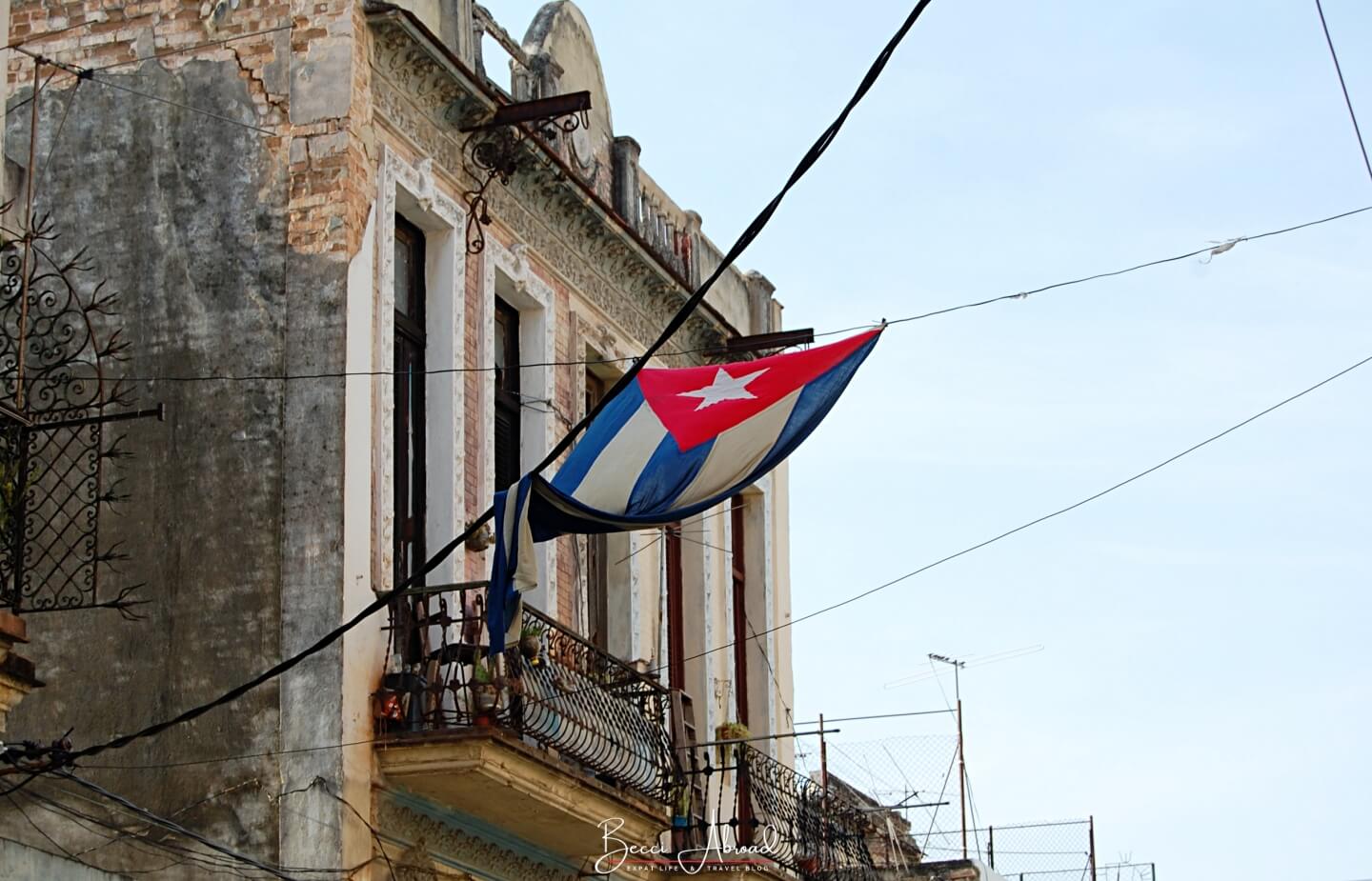
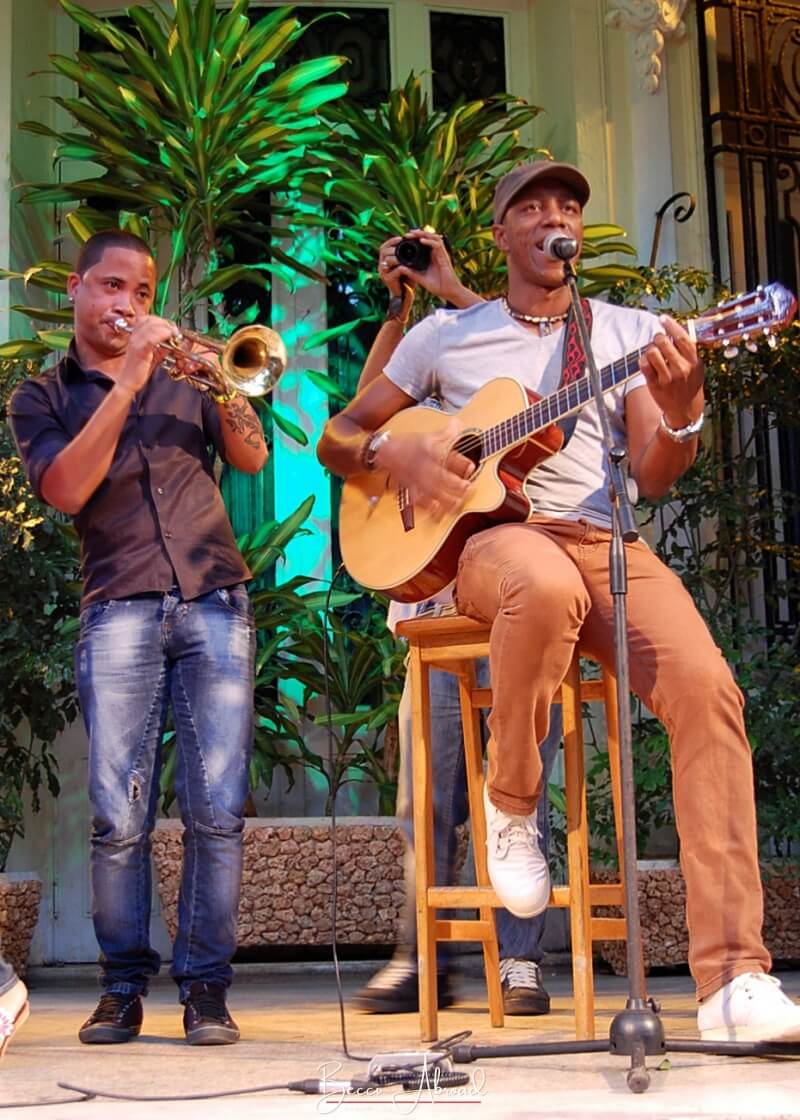
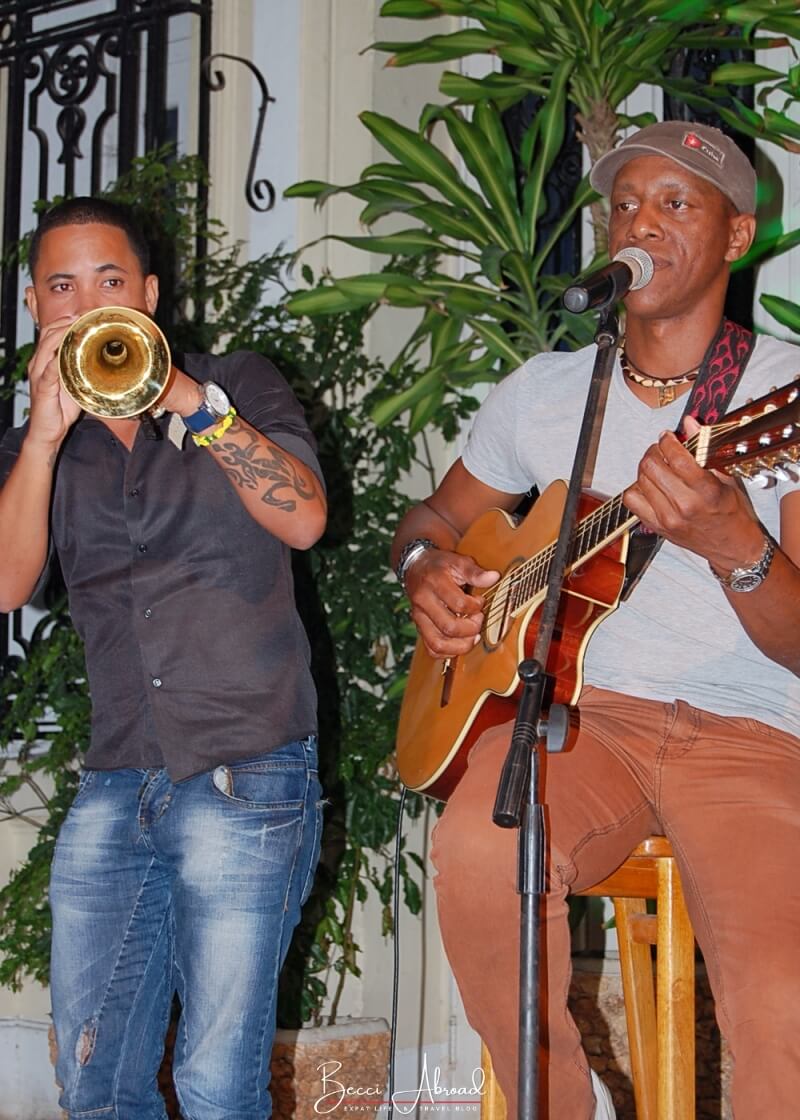
An Introduction to Cuban Music: Popular Cuban Music Genres
Cuban music has a rich and diverse history that reflects the island’s unique cultural blend of African, European, and North American influences.
In many Cuban songs, you will find a mix of African rhythms, Spanish melodies, and in modern Cuban music, also North American beats.
The history of Cuba is reflected in Cuban music. From 1521 to 1898, Cuba was under Spanish rule as part of the Spanish Empire. During the Spanish Empire, Cuba became a melting pot of cultures of Spanish immigrants and enslaved Africans. Each group of immigrants brought their own forms of music to Cuba.
After the independence from Spain, Cuba was under U.S. rule until 1902. The North American influence on the island has been constant almost ever since. The island’s big neighborhood in the north also heavily influences Cuban music.
Cuba features a variety of popular music genres like salsa, rumba, mambo, and son, reflecting its deep musical heritage.
Let’s explore some of the most popular Cuban music genres together!
Salsa – The Most Famous Cuban Music Genre
Salsa is a Cuban music genre that stands out above the rest as one of the most popular Cuban music genres of all time!
Salsa music appeared in Cuba in the 1960s and quickly became one of the most popular music genres to dance to in Cuba. The popularity of salsa spread around the world and salsa music is now known to feature some of the best Cuban songs to dance to!
Salsa music is a blend of various musical styles, including Afro-Cuban music rhythms, son cubano, mambo, and rumba.
Salsa music accompanies the popular salsa dancing; an energetic and sensual dance. There are many different types of salsa dancing, but Cuban salsa, also known as casino, is the most popular.
Cuban salsa dancing has more emphasis on improvisation and spontaneity than other types of salsa dancing.
Salsa music and salsa dancing have become an iconic symbol of Cuban culture known worldwide. In all the bigger cities in Cuba, you can find dance halls where Cubans meet to show off their salsa moves.
Son Cubano – The Traditional Cuban Music Genre
Son Cubano is another traditional Cuban musical genre with deep roots in Cuban culture, featuring a fusion of Spanish and African musical influences.
This Cuban music genre is known for its catchy melodies, lively rhythms, and heartfelt lyrics that often touch on themes of love, longing, and everyday life in Cuba’s countryside.
Son Cubano originated in the eastern part of Cuba in the late 19th century among farmers of Spanish descendants. Son Cubano is often seen as Cuban countryside music, also known as música campesina in Spanish. Some experts even claim Son Cubano to be the origin of all other Cuban music styles.
The Cuban singer Celina González is often seen as one of the most significant advocates of Son Cubano.
Celina González grew up in the Cuban countryside where she listened to these popular Cuban Son songs. When she moved to Havana to become a musician, she brought the Cuban Son Songs with her and helped popularize them.
One of the most famous Son Cubano songs is “Chan Chan” by the Cuban music group Buena Vista Social Club. The song’s infectious melody and heartfelt lyrics have made it a classic in the world of Cuban music.



Rumba – The Energetic Cuban Music Genre
Rumba is a popular Afro-Cuban music genre that originated in the Afro-Cuban communities of Havana and Matanzas in the late 19th and early 20th centuries.
Rumba is known for its energetic rhythms and lively percussion and combines elements of drumming. Rumba is mostly sung by a single lead singer with call-and-response chorus singing.
One of the most famous Cuban rumba songs is “Guantanamera”. The song was made famous by Cuban musician Joseito Fernandez in the 1920s and has since been covered by countless artists around the world.
Reggaeton – Modern Cuban Music
Reggaeton is a modern music genre that originated in Puerto Rico in the 1990s. However, Cuban music has given its own take on the sound of reggaeton.
Cuban reggaeton combines elements of reggae, dancehall, and hip-hop with lyrics reflecting everyday life in Cuba.
One of the key figures responsible for bringing Cuban reggaeton to the forefront of Cuban music is the local duo, Gente de Zona.
Gente de Zona was formed in the early 2000s and has become one of the most popular reggaeton groups both in Cuba and worldwide.
Danzon – Cuban Dance Music
Danzon is a Cuban dance music and dance style that originated in the late 19th century with inspiration from French contredanse music, English country dance, and Spanish contradanza.
In the 1870s, Danzon emerged in the Cuban region of Matanzas where the European ballroom traditions were combined with elements of African rhythms. This created a unique and vibrant sound that is distinctly Cuban.
Cubop – Afro-Cuban Jazz
One of the most famous genres of Cuban music is Cubop, also known as Afro-Cuban jazz.
Cubop is a unique blend of Afro-Cuban rhythms and jazz harmonies that emerged in the 1940s and 1950s.
Cubop combines the rhythms of traditional Cuban music, such as rumba and son, with the improvisational style of jazz. This fusion of genres creates a dynamic and energetic sound that has had a lasting impact on Cuban music.
Mambo – For More Dancing
Mambo is a popular genre of Cuban music that originated in the early 20th century. Mambo is characterized by its lively and upbeat tempo, syncopated rhythms, and catchy melodies.
Mambo became internationally popular in the 1940s and 1950s with Cuban musicians such as Pérez Prado.
Mambo became popular in the U.S. during the 1940s, and you can still experience Mambo music in some dance halls in Cuba.

20 Famous Cuban Songs for Your Cuba Playlist
There are so many famous Cuban songs to add to your playlist that it can be hard to choose. But I have created a list of famous and popular Cuban songs that I like the most!
Many of these Cuban songs bring back many memories of wandering the streets of Havana, and just generally get you in a good mood!
So, whether you’re planning a holiday to Cuba or just want to immerse yourself in Cuba’s music culture, this list of Cuban songs will give you a good introduction to some of the best Cuban songs:
Me Dicen Cuba – Alexander Abreu & Havana D’Primera
Me Dicen Cuba (They Call Me Cuba) is a Cuban song that pays a heartfelt tribute to Cuba and the Cuban people.
Me Dicen Cuba is performed by the Cuban band Havana D’Primera, led by Cuban singer Alexander Abreu.
The song depicts the strong sense of national pride that many Cubans have, even in the face of challenges.
Alexander Abreu and Havana D’Primera are considered some of the most popular and well-known modern musicians in Cuba. You are very likely to hear, at least, a couple of songs from Alexander Abreu and Havana D’Primera when you visit Cuba.
In my opinion, Me Dicen Cuba is one of the most beautiful Cuban songs dedicated to Cuba.
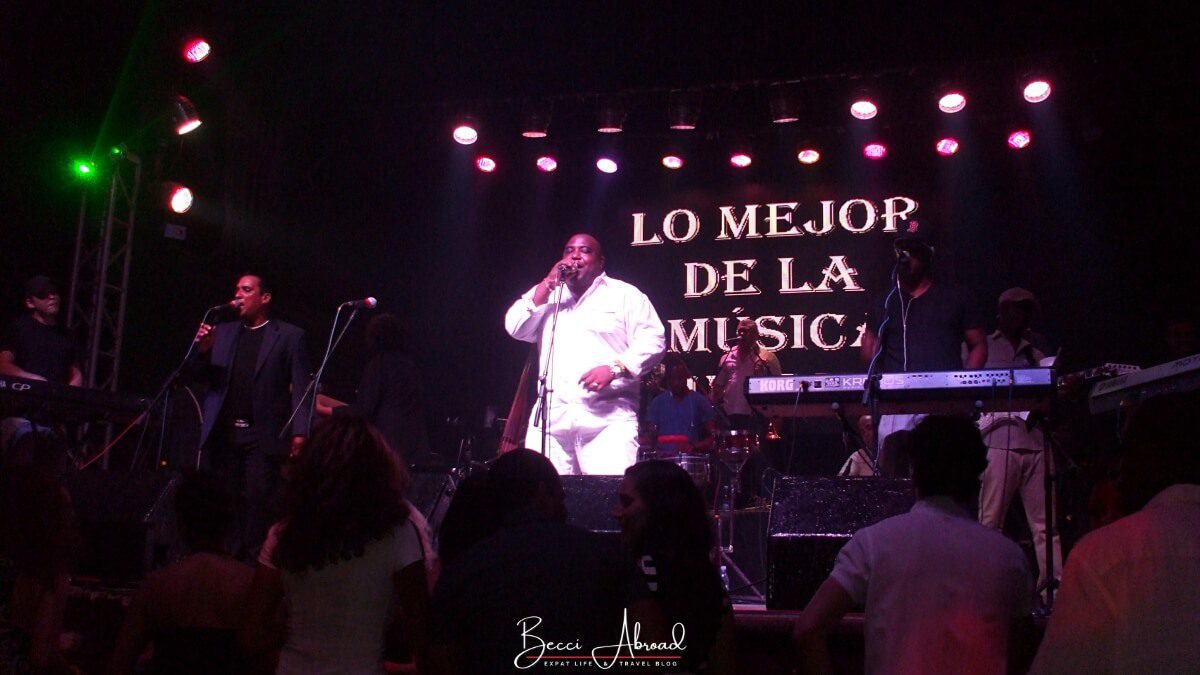
Habana Blues (Solo Tú y Yo)
The song Habana Blues (Solo Tú y Yo)” (Havana Blues (Only You and Me)) is one of my favorite Cuban songs!
The lyrics capture the daily struggles of Cubans’ everyday life: fighting to make ends meet, a country grappling with economic challenges, and families torn apart by migration.
The song is featured in the movie with the same title, Habana Blues. The movie follows the journey of two Cuban musicians navigating the challenges of making a career in music in Cuba with the big dream of moving abroad. In their pursuit of fame, they lose track of the struggles that their families face.
When their music career gains momentum, the main character’s wife chooses to illegally immigrate to the U.S. with their children. The separation of families through migration (both regular and illegal) is a situation that many Cuban families live with daily. The movie and the song ‘Only You and Me’ capture exactly that struggle.
The scenes in the music video below are excerpts from the movie around the time in the story when the main character learns that his wife is leaving.
You can see the full movie Havana Blues with English subtitles on YouTube. The movie features many amazing Cuban songs a part from Solo Tú y Yo. So, if you are interested in listening to more Cuban music while learning about Cuba, I highly recommend Havana Blues.
Every time I listen to this Cuban song and watch the music video, it brings me many memories of Havana. I love this song!
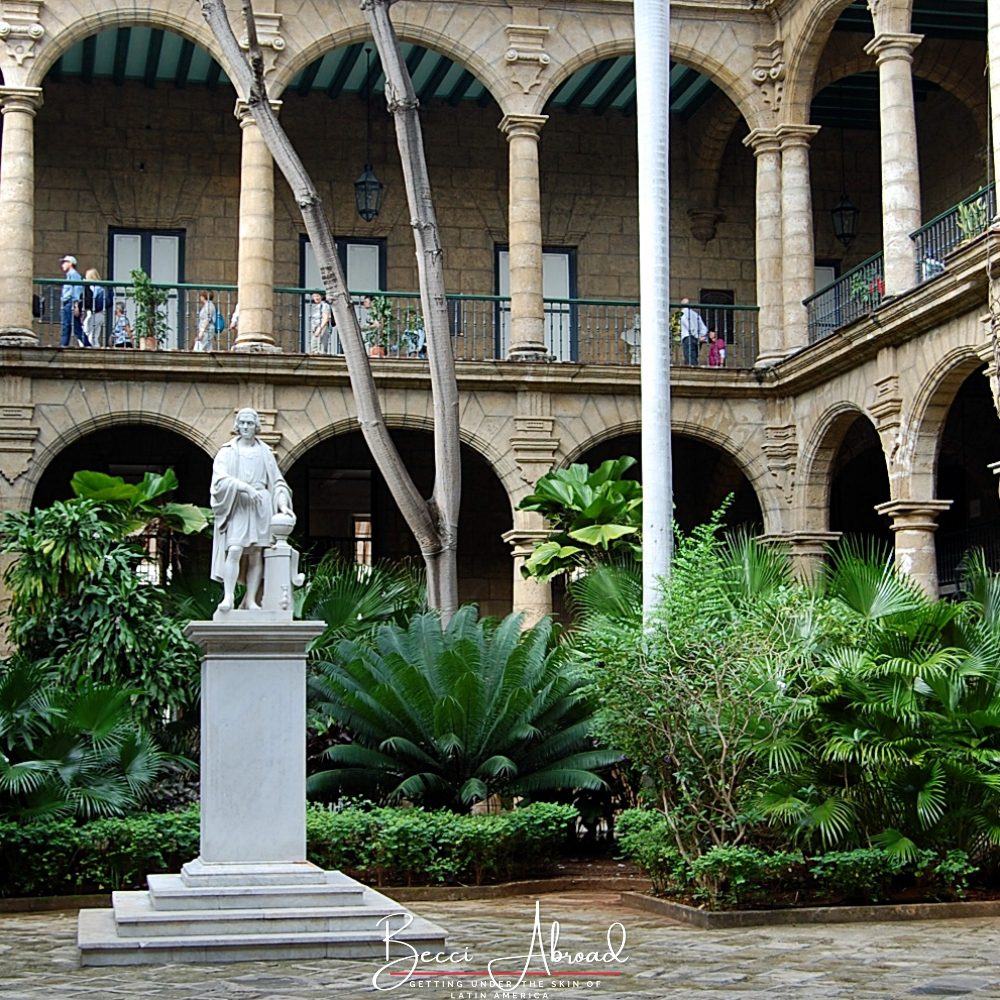
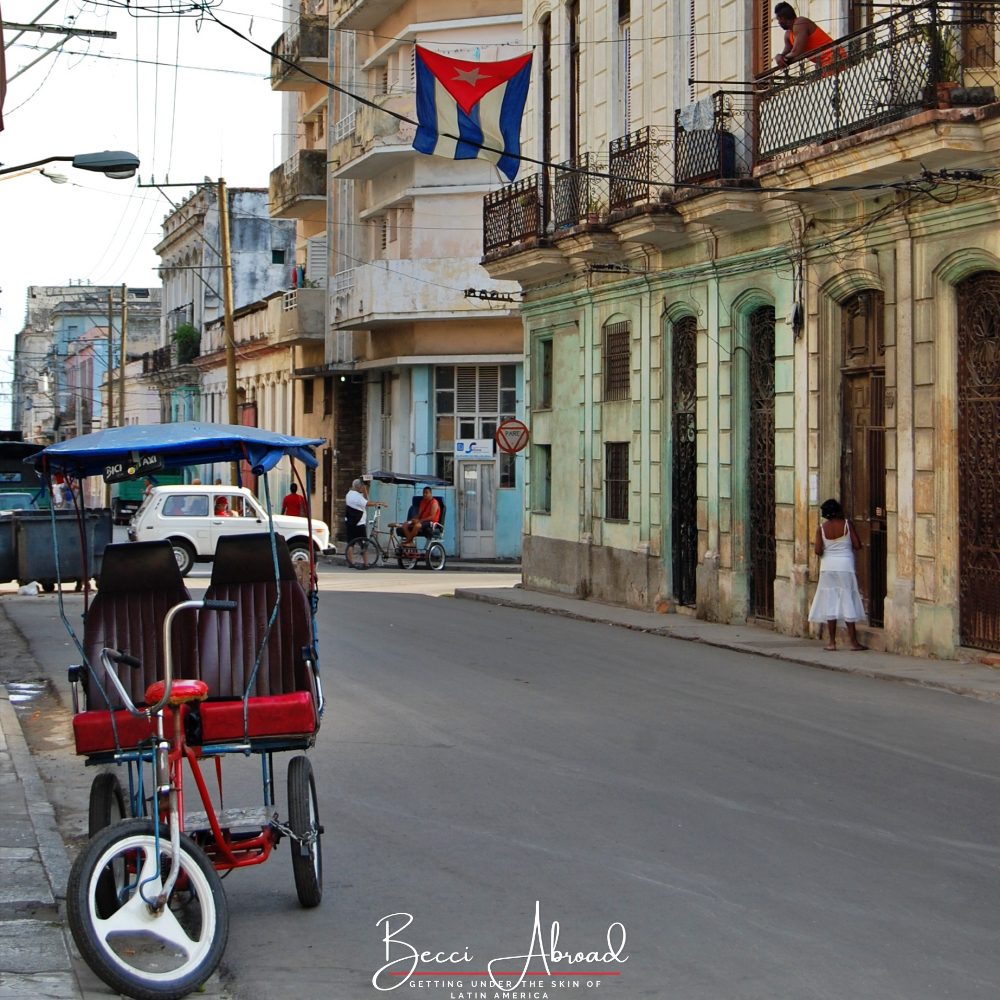
Guantanamera – Celia Cruz
Guantanamera (Woman from Guantánamo) is one of the most iconic and famous Cuban songs!
This classic tune blends traditional Cuban folk music with vibrant rhythms and powerful vocals, creating a timeless masterpiece.
Guantanamera was originally written in 1929 and has been interpreted by many different artists. One of my favorite Cuban versions of this iconic song is by the legendary Cuban singer, Celia Cruz.
The title of the song translates to “Woman of Guantánamo” or “Woman from Guantánamo”. Guantánamo is a Cuban city in the Southeastern part of Cuba.
The beginning of the iconic Cuban song Guantanamera is from a poem by the Cuban writer and national hero, José Martí. The lyrics of the song celebrate the beauty of the Cuban countryside referring to la Guantanamera Guajira.
Guajira is a popular Cuban slang word used for Cubans living in the countryside. While guajira sometimes can be seen as a bit of a condensing word, this popular Cuban song brings pride and honor back to the countryside life.
Guantanamera is a patriotic Cuban song but the song has also been used more broadly as a protest symbol for peace and justice in Latin America.
Celia Cruz, known as the Queen of Salsa, brought her unique style and energy to this beloved song, infusing it with the vibrant rhythms and infectious spirit of Cuban music.
Celia Cruz is considered one of the most popular and influential figures in Latin American music. While Guantanamera is seen as an iconic symbol of Cuban culture and its rich musical heritage.
Me Mantengo – Juan Formell & Los Van Van
Me Mantengo (I Keep Up) is a classic Cuban song with plenty of salsa energy from the legendary Cuban band, Juan Formell and Los Van Van.
Los Van Van was founded in Havana in 1969 and is one of the most popular post-revolution Cuban salsa bands. Their success with taking Cuban music globally has gained them even more credit internally in Cuba. Despite their daily hardship, Cubans are very proud of their country and their culture – including Cuban music!
So, you can be sure that most Cubans know about Los Van Van, and are very proud of their success!
Me Mantengo is one of my favorite Cuban songs from Los Van Van. The song features a fusion of many traditional Cuban music styles such as son and timba with jazz, which has become part of Los Van Van’s signature sound.
The lyrics of Me Mantengo are another testament to the Cuban people’s resilience and ability to overcome challenges but communicated with the iconic upbeat rhythms of Los Van Van.
This Cuban song has such a great energy that you can almost not sit still when listening to it. It is hard not to start dancing! You can earn some extra points from your Cuban host family at your Casa Particular (Cuban home stay) by known Los Van Van!

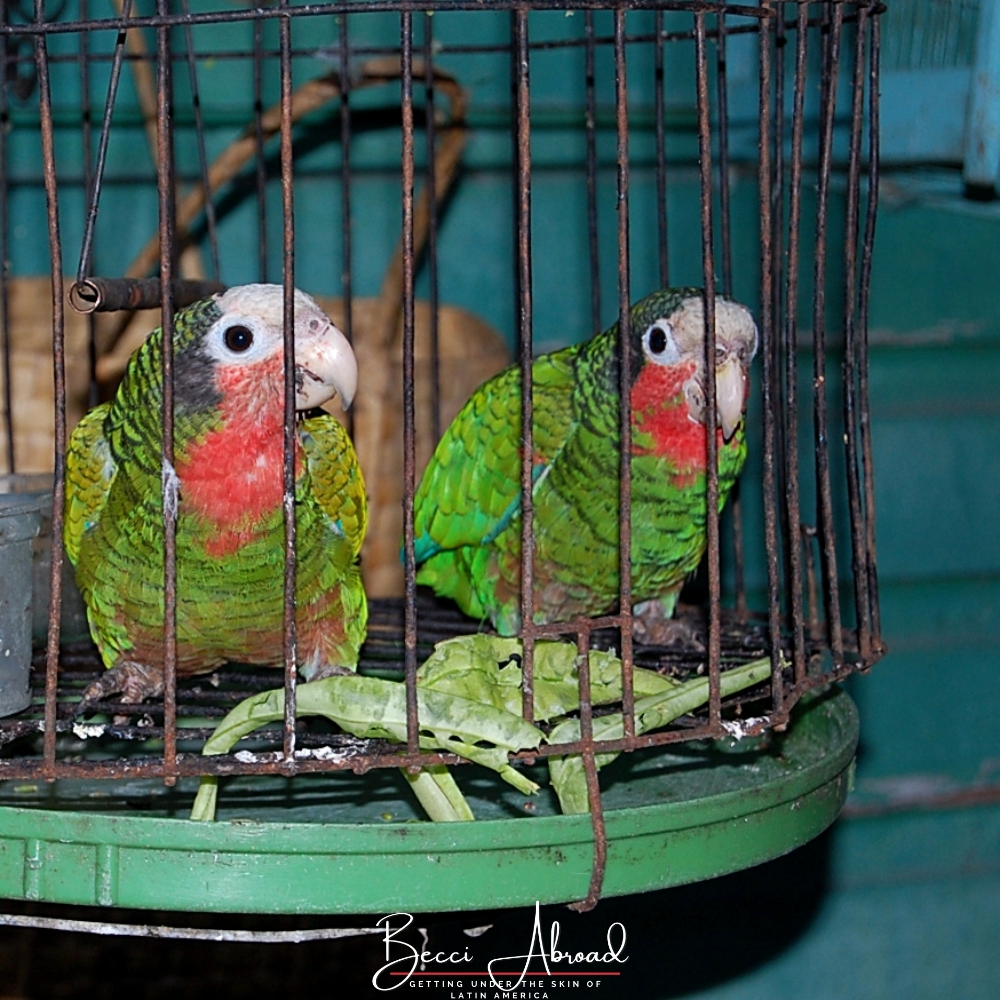
Quisiera Volver – Descemer Bueno & Baby Lores
Quisiera Volver (I Would Like to Come Back) is a slow romantic Cuban song created as in a duet between Cuban musicians Descemer Bueno and Baby Lores.
Quisiera Volver captures the essence of nostalgia present everywhere in Cuba, and this song brings so many Havana memories to me every time I listen to it!
The lyrics of this beautiful Cuban song are about missing the vibrant streets of Havana and the warm embrace of loved ones.
Descemer Bueno is mostly known for his participation in the mega-hit Baliendo with Enrique Iglesias and the Cuban reggaeton group, Gente de Zona.
However, Descemer Bueno has made some very nice Cuban pop and salsa songs – among those Quisiera Volver.
Pasaporte – Havana D’Primera
Pasaporte (Passport) is a Cuban salsa song from the popular dance music group Havana D’Primera.
The lyrics of this Cuban song tell the story of a girl who takes refuge in the dream of a “passport” as the door to a better world and better living standards.
Pasaporte captures the essence of everyday life for many Cubans with economic hardship, having to work two jobs, and dealing with alcoholism and despair… And the dream of migrating to a better place.
The fascinating mix of a danceable salsa song with the dark truths of everyday life in Cuba is as Cuban as it becomes. And I think that is the reason why this Cuban song has been put in the hearts of every Cuban.
Ojos Negros – Kelvis Ochoa y Desemer Bueno
Ojos Negros (Black Eyes) is a beautiful slow Cuban song by Cuban artists Kelvis Ochoa and Descemer Bueno.
Ojos Negros is a love song dedicated to the city of Havana with its mix of chaos and beauty! This popular Cuban song features a modern touch to traditional Cuban rhythms and instruments.
By listening to and watching the video for Ojos Negros, you will want to stroll through the streets of Havana.
Kelvis Ochoa’s particular voice adds something very special to this song. You can also see Kelvin Ochoa perform in the movie I mentioned above, Havana Blues.


Sábanas Blancas – Omara Portuondo
Sábanas Blancas (White Sheets) is a Cuban song written by the Cuban musician and author Gerardo Alfonso as a love song dedicated to the city of la Habana.
The version of Sábanas Blancas I have added to the list was performed by Cuban singer Omara Portuondo.
Omara Portuondo was previously a part of the Buena Vista Social Club project, and she has won several awards over the years.
The version of the famous Sábanas Blancas with Omara Portuondo was created for the 500th anniversary of Havana’s foundation.
The video that was created together the Omara Portuondo’s version of the famous Cuban song is one of my favorite videos about Cuba.
Cuba Isla Bella – Orishas
Cuba Isla Bella (Cuba Beautiful Island) is a modern contribution to Cuban music from the Cuban hip-hop and rap band, Orishas.
Cuba Isla Bella is dedicated, as the title indicates, to the beautiful island of Cuba. The lyrics tell the story of the homesickness and longing to return to their home country that many Cubans live with when they move abroad.
The video of Cuba Isla Bella is one of the best promotional videos for Cuba, you will ever see! After watching it you are left with a big ought to jump on a plane to visit Cuba.
The name of the band – Orishas – is a reference to natural elements in African-based religions. In Cuba, many religions of African origin such as Santería are still practiced and very popular among Cubans.
Cuba Isla Bella features Descemer Bueno, Gente de Zona, and many other famous Cuban artists, and the song is also a reminder of the power of music to bring people together!


¿Cambiará? – X Alfonso
¿Cambiará? (Will It Change?) from X Alfonso is one of my favorite Cuban songs that explains and questions the socio-political issues Cuba and the Cuban people face.
The song addresses topics such as freedom of expression, economic struggles, and the hope for a better future with the catchy beat and powerful message; ¿Cambiará? Will it change?
¿Cambiará? is a reflective and thought-provoking song. The song is a testament to the power of music as the song has become a popular anthem for those who yearn for positive change in Cuba.
X Alfonso has become one of the most iconic and influential figures in Cuban music with his unique blend of reggae, hip-hop, funk, and traditional Cuban rhythms.
X Alfonso is also the founder of the popular cultural space, nightclub, and modern art museum, Fábrica de Arte Cubano.
Fábrica de Arte Cubano is by far one of the best things to do in Havana to explore the modern side of Havana.

Chan Chan – Buena Vista Social Club
Chan Chan is by far one of the most iconic and beloved Cuban songs in Cuban music history!
Chan Chan is a song produced by the legendary Cuban group Buena Vista Social Club, and the song has become synonymous with the vibrant and soulful sound of traditional Cuban music.
Buena Vista Social Club was formed by a group of veteran Cuban musicians who came together in the 1990s to revive traditional Cuban music styles.
The group was formed by musician Juan de Marcos González and American guitarist Ry Cooder, who traveled to Cuba to record an album and documentary featuring some of the country’s most talented musicians.
The Buena Vista Social Club album was a huge success and introduced many people to the vibrant Cuban music.
The album featured a mix of traditional Cuban songs and styles, performed by legendary Cuban musicians such as Compay Segundo (guitarist Máximo Francisco Repilado Muñoz Telles), Ibrahim Ferrer, and Omara Portuondo.
Chan Chan was released in 1997 by Buena Vista Social Club and went on to win numerous awards and accolades. The album which features Chan Chan even went on to win a Grammy for Best Tropical Latin Performance.
The song’s lyrics tell the story of a man named Chan Chan who is courting a woman named Juanica in the town of Guantanamo. The upbeat rhythm and beautiful harmonies make “Chan Chan” a timeless classic of Cuban music.
Chan Chan and the work of Buena Vista Social Club has become an iconic and extremely famous example of Cuban music!


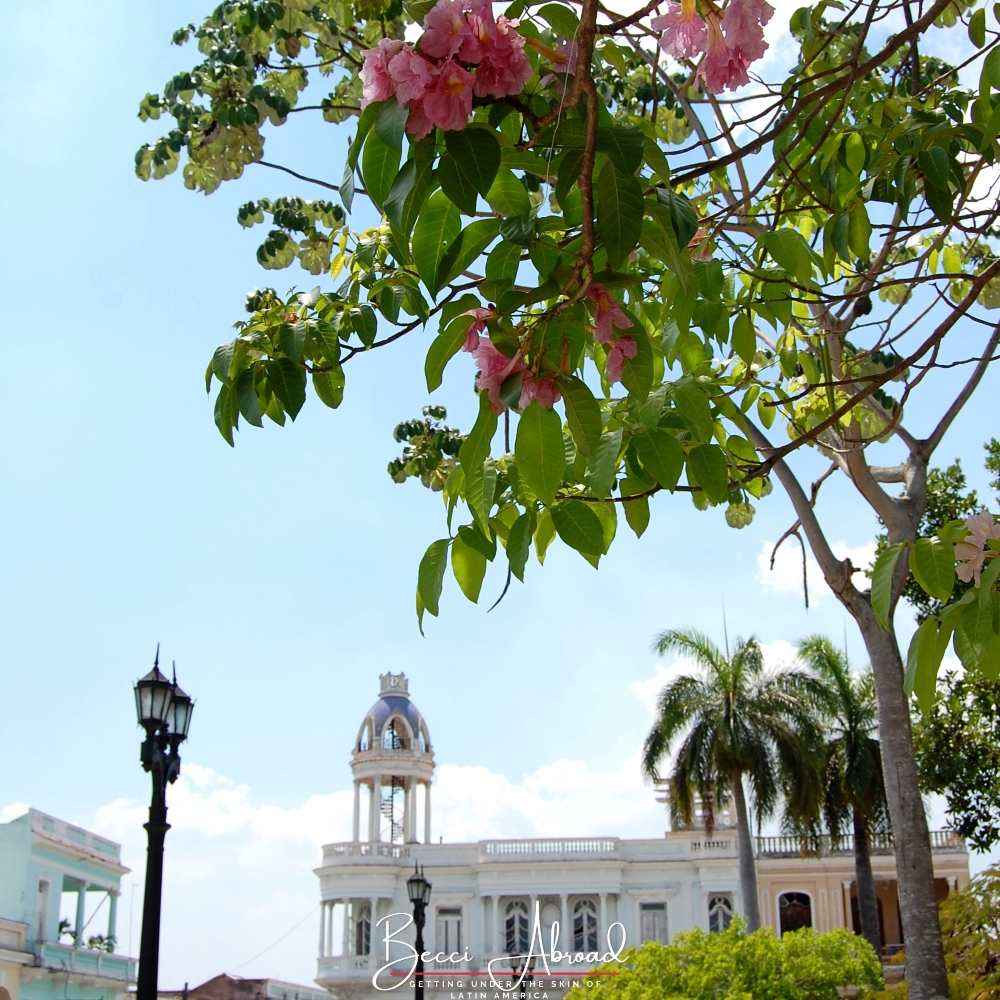

Hace Calor en la Habana (Cuando Sali De La Habana) – Habana Abierta
Hace Calor en la Habana (It’s Hot in Havana), also known as Cuando Sali de la Habana (When I left Havana) is a popular Cuban song by the Cuban band Habana Abierta.
Hace Calor en la Habana was composed by Kelvis Ochoa and combines elements of salsa, son, and Afro-Cuban rhythms.
Habana Abierta is a Cuban band that consists of the Cuban musicians Vanito Brown, Alejandro Gutiérrez, Luis Alberto Barbería, Jose Luis Medina, Boris Larramendi, Kelvis Ochoa, Andy Villalón and Pepe del Valle.
Habana Abierta started making music together in Havana in the mid-1990s. The group mixes popular Cuban music genres with funk, reggae, and hip-hop to create a very particular sound.
Hace Calor en la Habana is an iconic example of modern Cuban music you need to know before you visit Cuba!
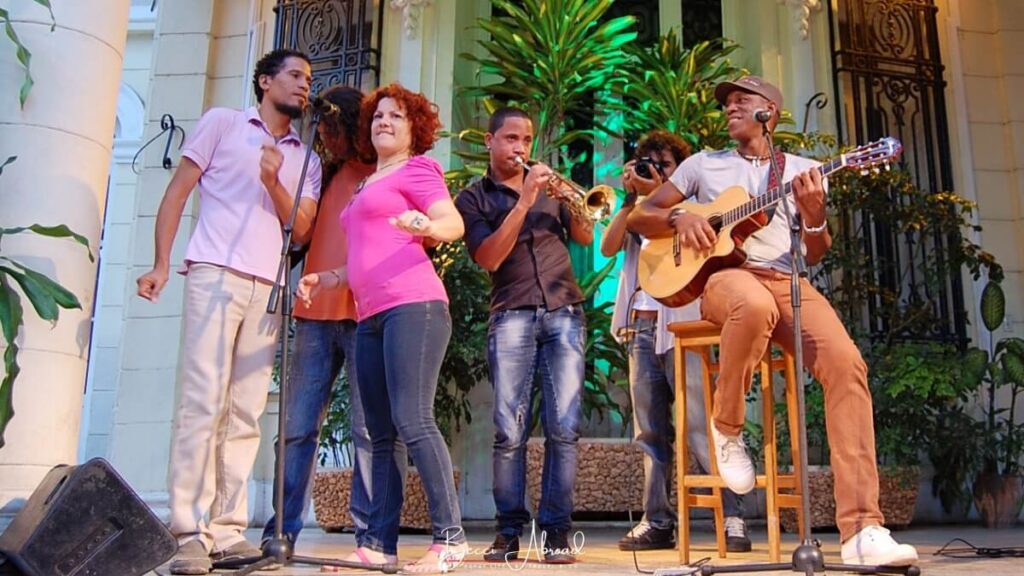

Si No Vuelves – Gente De Zona
Si No Vuelves (If You Don’t Come Back) is one of the many popular Cuban songs from the Cuban reggaeton duo, Gente De Zona.
The song Si No Vuelves is a romantic Cuban song with lyrics telling about heartbreak and longing. However, with most music from Gente De Zona, a love song can be emotional and danceable at the same time.
Si No Vuelves is also a perfect example of Gente de Zona’s signature sound, where they blend reggaeton with elements from traditional Cuban music.
Gente De Zona is one of the most famous Cuban Music groups in the 21st century. The group is known for their catchy tunes and energetic performances. You can be sure to hear Gente De Zona among the younger generations of Cubans.
Lagrimas Negras – Buena Vista Social Club ft. Omara Portuondo
Lagrimas Negras (Black Tears) is a timeless classic Cuban song!
When you listen to the song, you might realize that you already know without knowing that this song is a Cuban song.
Lagrimas Negras is an example of the traditional Cuban music genre, the Son Cubano. The song was originally written by Cuban musician Miguel Matamoros in 1929 and has been reinterpreted several times by various artists.
One of my favorite versions of Lagrimas Negras is this one by Buena Vista Social Club and Cuban singer Omara Portuondo (unfortunately, there isn’t a proper video).
The song Lagrimas Negras tells the story of a woman who was abandoned by her husband, based on Miguel Matamoros’ encounter with a woman in a similar situation.
Another popular version of Lagrimas Negras is by Bebo Valdés and Diego El Cigala. Bebo Valdés was a famous Afro-Cuban musician who played a pivotal role in promoting traditional Cuban music.


Ciudad Hembra (La Habana) – Alex Cuba
Ciudad Hembra (La Habana) (Female City (Havana)) is a modern Cuban song to add to your Cuban playlist. The song was composed by Cuban-Canadian Alex Cuba and Cuban musician Kelvis Ochoa in 2019.
Ciudad Hembra has a catchy and upbeat rhythm featuring a fusion of traditional Cuban rhythms with modern pop elements.
The music video and the lyrics of the song capture the hardship that life in Havana is for most Cubans.
The catchy phrase in the song Donde si te duermes te pasan la cuenta, actually translates to “if you sleep, it (the city) will make you pay”, and reflects the constant struggles of everyday life in Cuba.
Alex Cuba’s smooth vocals, the guitar riffs, and the interesting story in the lyrics make “Ciudad Hembra” a Cuban song you should be adding to your playlist!
Bailando – Descemer Bueno ft. Gente de Zona ft. Enrique Iglesias
Bailando (Dancing) became a global mega-hit between 2013 – 2015. No matter whether you are interested in Cuban music or not, you have properly heard of Bailando.
Bailando was first created by the Cuban popular reggaeton duo Gente de Zona. However, it wasn’t until the Cuban musician December Bueno and Spanish superstar Enrique Iglesias dressed the song up a bit with some pop rhythms that this Cuban song became a global hit.
The music video of Bailando features beautiful scenes from Havana with Cuban people expressing themselves by having fun, singing, and dancing.
Battling against the Cubans’ dynamic, spontaneous, and unpolished dance moves dance beautifully dressed Spanish flamingo dancers.
I have also viewed this music video as a comment on Cuba’s old dependence fight against the Spanish Empire, but maybe I’m just putting too much into a fun very danceable Cuban song.
If you want to improve your Spanish, learn Spanish on italki!
Hasta Que Se Seque el Malecón – Jacob Forever
Hasta que se seque el Malecón (until the Malecón dries out) is a Cuban reggaeton song from the Cuban artist Jacob Forever.
The Malecón is an 8 km long ocean drive in Havana and one of the most iconic places to visit in Havana.
The Malecón is a popular place for Cubans to meet up at sunset to share a moment with friends and family and cool down in the evening brise from the Carribean Sea.
The title of the song hasta que se seque el Malecón, translated as “until the Malecón dries out” is a popular phrase in Cuba referring to something that will never happen. Since for the Malecón to dry out the whole Caribbean Sea should dry out.
Jacob Forever used to form part of the popular Cuban reggaeton group Gente de Zona, and this Cuban song from him has a very similar sound to some songs from Gente de Zona.
The story goes that the song is about how Jacob Forever is determined to move on with his solo work away from the popular Gente de Zona.


Gozando en La Habana – Charanga Habanera ft. Chacal
Gozando en La Habana (Enjoying in Havana) is a popular Cuban song from the end of the 2000s showcasing what happens when you mix salsa and reggaeton in the same song.
Gozando en La Habana is performed by the popular Cuban band La Charanga Habanera and solo artist Chacal. The catchy rhythms and fun mix of English phrases with the Cuban Spanish, make it a great Cuban song to listen to to prepare for your Cuba trip.
The lyrics of this popular Cuban song have an interesting turn compared to many other modern Cuban songs.
The lyrics of Gozando en La Habana highlight the benefits of choosing to stay in Cuba with friends and family instead of emigrating to pursue economic stability. The lyrics over and over again refer to how the artists are enjoying Havana while somebody else is sad and crying in Miami while they miss Havana.
Miami is a popular destination for illegal Cuban immigration to the U.S. because of the proximity between Miami and Cuba.
This song also has perfect examples of how the Cubans use Cuban slang words such as Qué Bola (what’s up) and Yuma to refer to foreigners, especially foreigners from the U.S.
Hasta Siempre, Comandante – Carlos Puebla
Hasta Siempre, Comandante was written by the Cuban songwriter Carlos Puebla in 1965 as a public farewell to the Argentine Che Guevara.
Che Guevara, despite being born in Argentina, played a pivotal role in the Cuban Revolution and is still considered a national hero by many Cubans.
The lyrics of the song are poetic and melancholic while referring to several important situations in Che Guevara’s life in Cuba.
The song, for example, covers Che Cuevara’s friendship with Fidel Castro and his importance for the Cuban city, Santa Clara, which he won over during the Cuban Revolution.
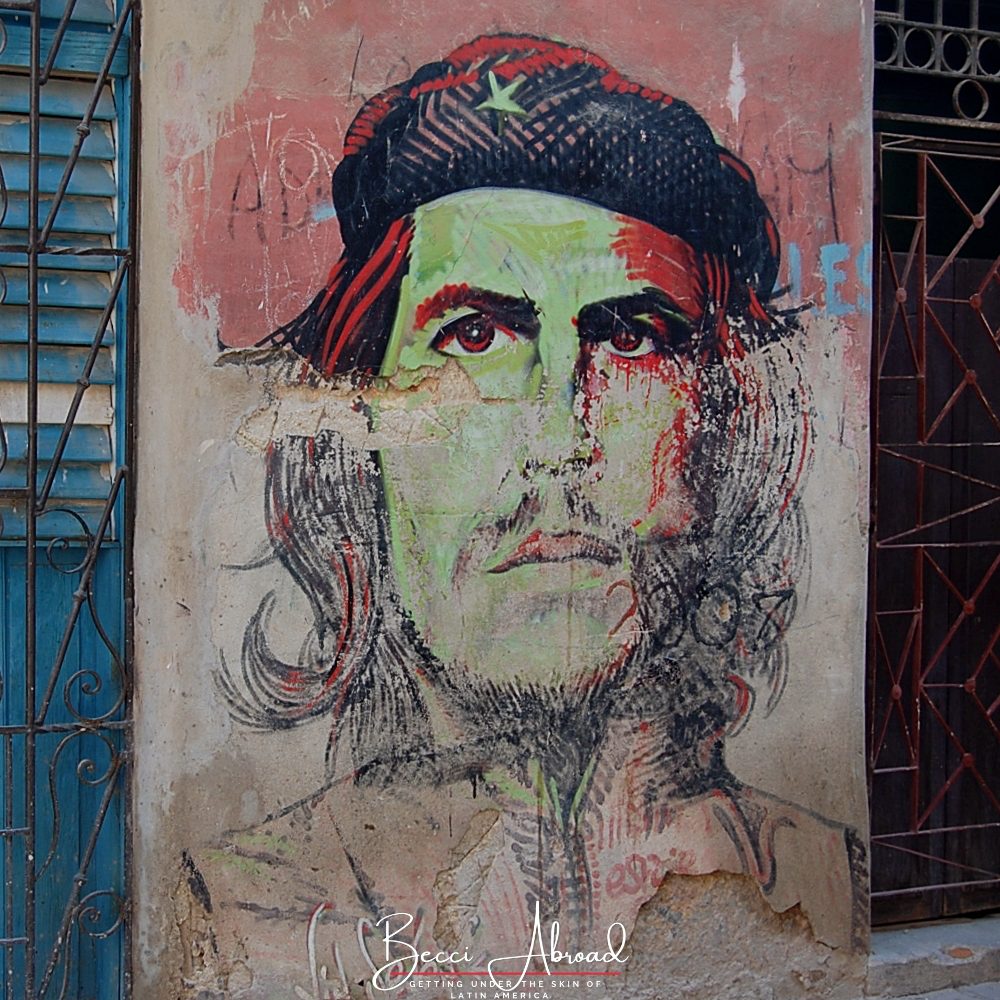

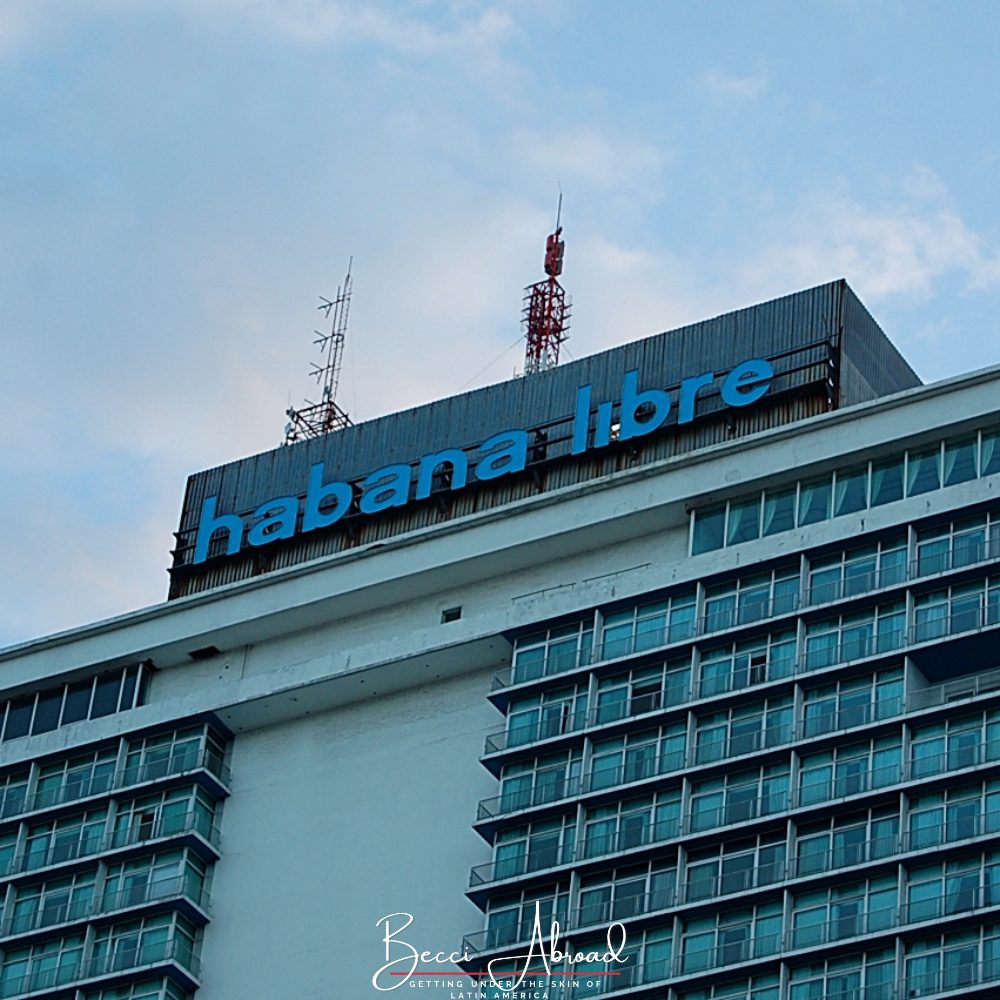

Asere, ¿Qué Volá? – Habana Abierta
Asere, ¿Qué Volá? (Bro, what’s up) is one of the best Cuban songs if you want to practice a bit of Cuban slang before a visit to Cuba!
Asere, ¿Qué Volá? is a phrase commonly used in Cuba to greet friends and ask how they are doing. Throughout the song, many different Cuban slang phrases are used.
Asere, ¿Qué Volá? is composed and performed by the Cuban band Habana Abierta. With this song, Habana Abierta tells the story of how life in Cuba is restricted, and how little information about the world is shared on the island.
This Cuban song is a catchy fusion of elements of rock, hip-hop, and traditional Cuban music.
How to Get the Most Out of Cuban Music?
Cuban music offers vibrant and diverse sounds and rhythms that reflect Cuba’s unique cultural heritage of particularly Spanish, African, and North American influences.
However, to get the most out of Cuban music and the many great Cuban songs out there, I strongly recommend that you brush off your Spanish!
Having a good level of Spanish understanding will help you so much enjoy and appreciate the lyrics of Cuban songs.
One of the best ways to improve your Spanish is either with private Spanish classes when you visit Cuba or with online Spanish classes from websites such as Italki.
If you want to improve your Spanish, learn Spanish on italki!



Which of the Cuban songs on the list, did you like the most? Did they make you want to travel to Cuba in the future? Do you have a favorite Cuban song?
Please feel free to share your thoughts and favorite songs in the comments below!







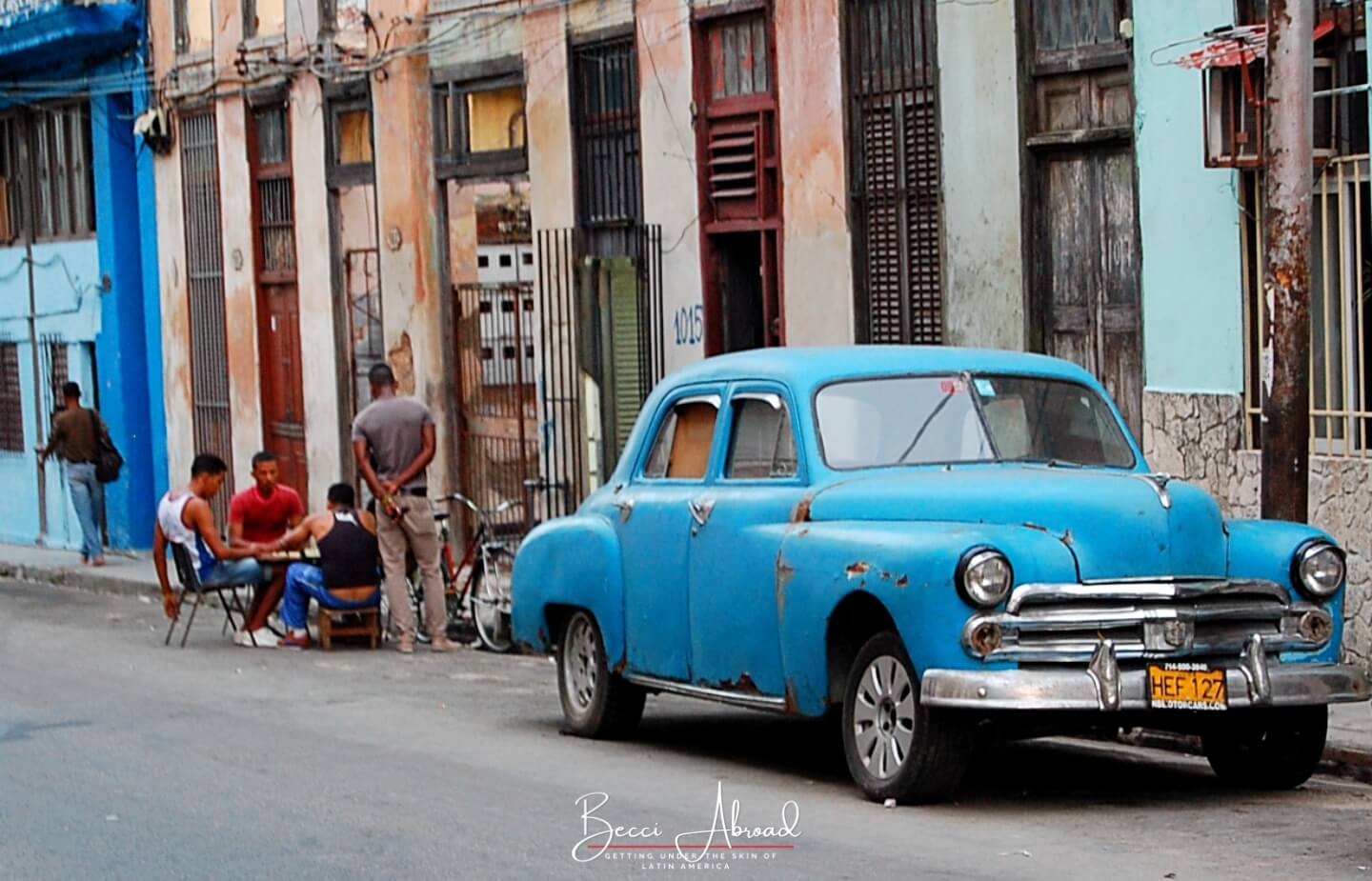
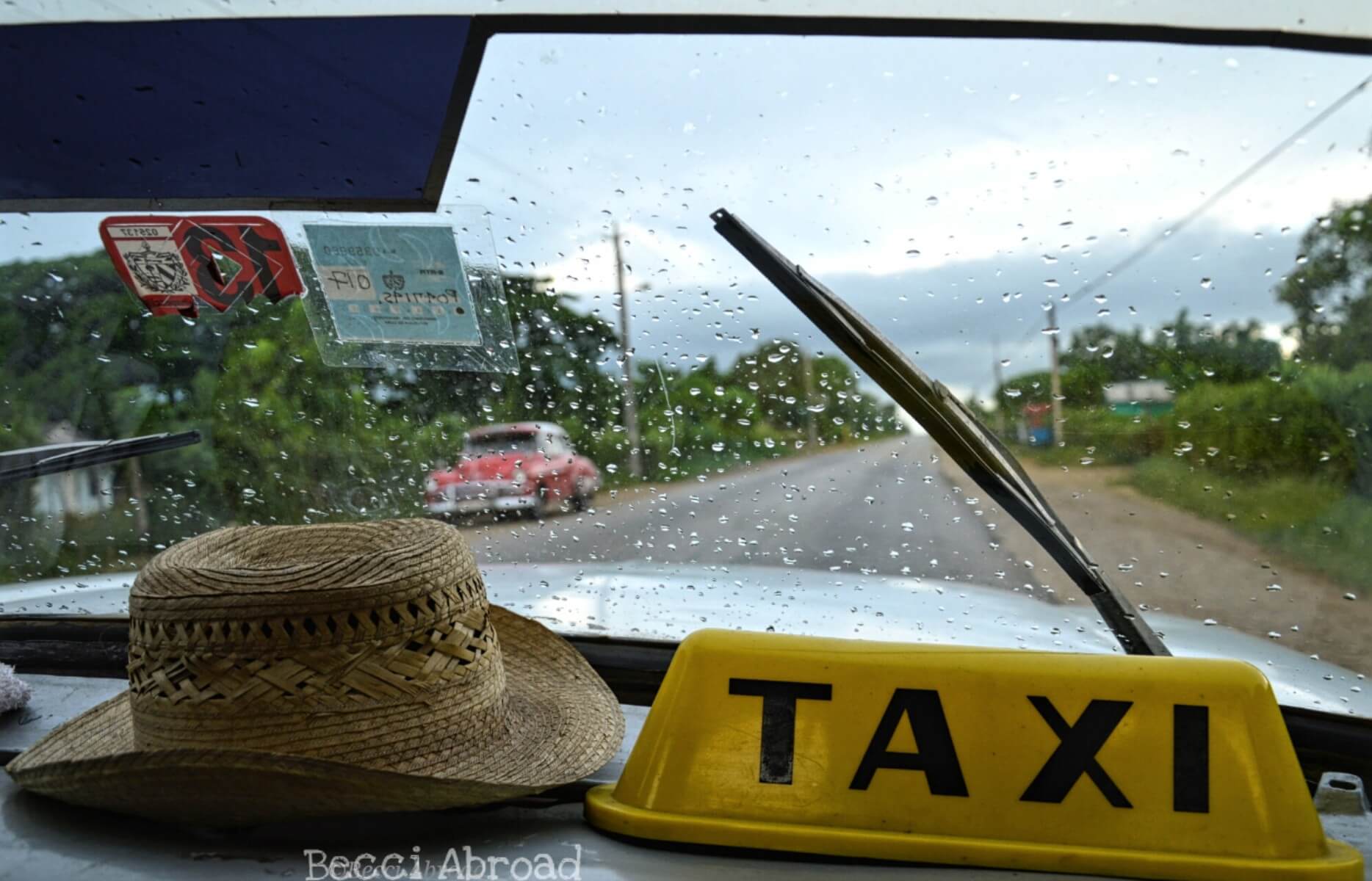

2 Comments
Hd
Becci! Great great songs!!
Rebecca
Thank you so much, Hernan! I’m happy to bring a bit Cuban “onda” to your quarantine 😉